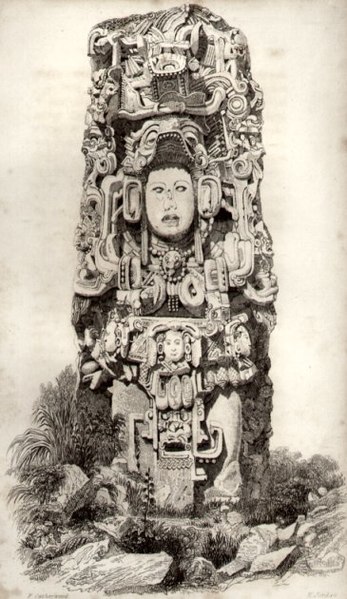The Mesha Stele, also known as the Moabite Stone, is a stele dated around 840 BCE containing a significant Canaanite inscription in the name of King Mesha of Moab. Mesha tells how Chemosh, the god of Moab, had been angry with his people and had allowed them to be subjugated to the Kingdom of Israel, but at length, Chemosh returned and assisted Mesha to throw off the yoke of Israel and restore the lands of Moab. Mesha also describes his many building projects. It is written in a variant of the Phoenician alphabet, closely related to the Paleo-Hebrew script.
The Mesha Stele at the Louvre: The brown fragments are pieces of the original stele, whereas the smoother black material is Ganneau's reconstruction from the 1870s.
Detail of a portion of lines 12–16, reconstructed from the squeeze. The middle line (14), transliterated as את. נבה. על. ישראל ('t nbh 'l yšr’l) reads "Take Nabau against Israel"
A stele, or occasionally stela when derived from Latin, is a stone or wooden slab, generally taller than it is wide, erected in the ancient world as a monument. The surface of the stele often has text, ornamentation, or both. These may be inscribed, carved in relief, or painted.
Stele N from Copán, Honduras, depicting King K'ac Yipyaj Chan K'awiil ("Smoke Shell"), as drawn by Frederick Catherwood in 1839
Stele to the French 8th Infantry Regiment. One of more than half a dozen steles located on the Waterloo battlefield.
The funerary stele of Thrasea and Euandria, c. 365 BC
Stela of Iddi-Sin, King of Simurrum. It dates back to the Old Babylonian Period. From Qarachatan Village, Sulaymaniyah Governorate, Iraqi Kurdistan. The Sulaymaniyah Museum, Iraq.






